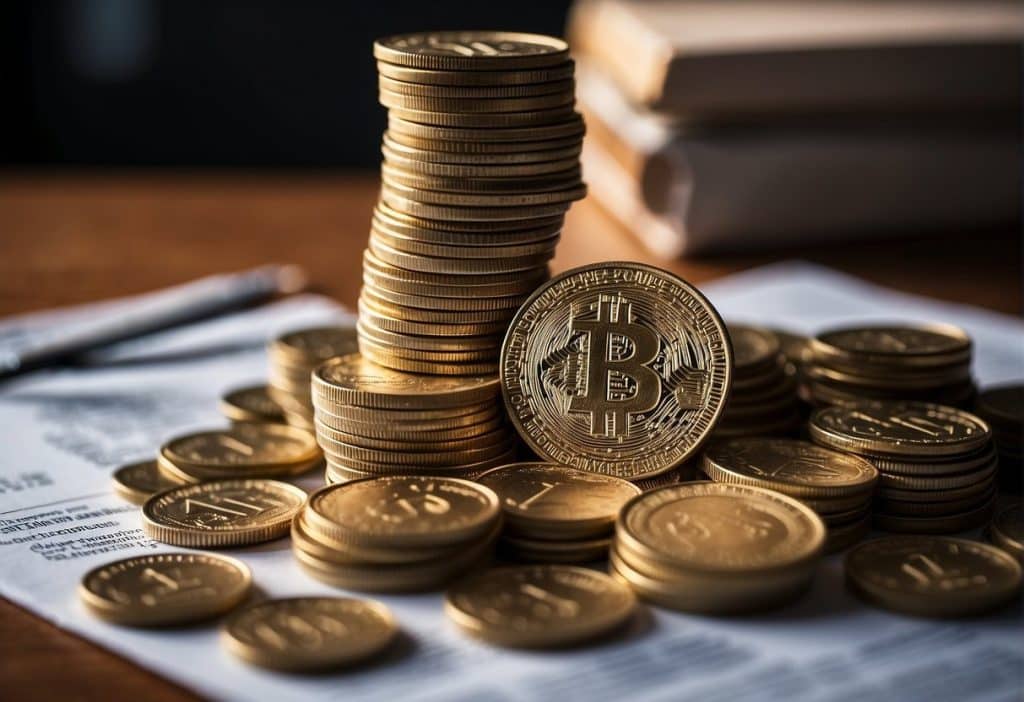Staking has become an essential activity in the cryptocurrency space, offering investors a method to earn rewards on their holdings. Binance.US, a platform tailored for United States residents, has made it simpler for users to participate in staking. With a user-friendly interface, Binance.US provides a straightforward staking process, allowing you to support various blockchain networks while earning rewards for your contribution. The platform’s staking service lowers entry barriers, enabling you to start with a minimal investment, which is particularly beneficial for those new to cryptocurrency staking.
The flexibility of Binance.US staking means you can choose from a variety of cryptocurrencies, including popular ones like Ethereum (ETH), Binance Coin (BNB), and Cardano (ADA), among others. With competitive staking rewards and the convenience of managing your staking activity directly through the Binance.US app, it’s a practical choice for both seasoned investors and beginners. Moreover, Binance.US aims to maintain high standards of security and storage solutions, ensuring your staked assets are safe while you accrue potential earnings.
Key Takeaways
- Binance.US facilitates crypto staking for users in a simple, accessible manner with potential rewards.
- You can manage and participate in staking various supported cryptocurrencies through Binance.US’s platform.
- Security, ease of use, and access to frequently asked questions provide a comprehensive staking experience on Binance.US.
Understanding Staking on Binance.US
When you stake on Binance.US, you’re both supporting networks and earning rewards. This section will guide you through the essentials of staking, its underpinning concept, Proof-of-Stake, and how Binance.US facilitates staking for its users.
What Is Staking
Staking is the process of actively participating in transaction validation (similar to mining) on a proof-of-stake (PoS) blockchain. On these blockchains, anyone with a minimum-required balance of a specific cryptocurrency can validate transactions and earn staking rewards.
- Start Staking: You can begin staking your cryptocurrency through the Binance.US platform by simply interacting with its user interface and choosing the assets you wish to stake.
- Staking Services: Binance.US provides a service that makes it easier for you to stake cryptocurrencies directly through your wallet on the platform.
Proof-of-Stake (PoS) Explained
Proof-of-Stake (PoS) is a consensus mechanism for blockchains that allows for more energy-efficient transaction validation. To participate in PoS:
- You must hold a stake in a cryptocurrency.
- You then use those assets to help validate transactions on the network.
- Validators are chosen to create new blocks and confirm transactions based on the size of their stake and other factors.
The Role of Binance.US in Staking
Binance.US acts as a platform to engage in staking, offering:
- On-Chain Staking: By staking your digital assets through Binance.US, you contribute to the network’s security and operation.
- Rewards: Earn returns on your investments; these can vary based on the specific cryptocurrency and market conditions.
When you use Binance.US for staking, you tap into an infrastructure that streamlines your participation in PoS protocols. It simplifies the process, making it accessible even if you’re not deeply versed in the technicalities of crypto staking.
Getting Started with Binance.US Staking

To embark on staking with Binance.US, you’ll need to set up an account, complete basic verification, fund your wallet, and learn the staking process. The platform’s user-friendly interface simplifies these steps, allowing you to earn staking rewards.
Creating a Binance.US Account
To get started, download the Binance.US app or go to the Binance.US website. Hit the Sign Up button and enter your details. Choose a strong password and secure your account with two-factor authentication for added security.
Basic Verification Process
Once you’ve signed up, you’ll need to undergo a basic verification process to ensure compliance with regulatory requirements. This will involve providing personal information and possibly documents for identity verification. Once approved, you’re ready to access Binance.US’s services.
Funding Your Wallet
Before you can stake, your Binance.US wallet must be funded with cryptocurrency. Navigate to the Wallet section, select Deposit, and choose from a variety of options to transfer crypto into your account. You can also buy crypto directly on Binance.US with USD.
How to Stake on Binance.US
To start staking, log in to your account and head to the staking homepage on the app or website. You’ll see a list of supported cryptocurrencies with their respective staking rewards. Simply select the crypto you wish to stake, read the terms, and confirm your participation to begin earning rewards.
Remember, staking involves locking in your cryptocurrency for a set period, during which you’ll earn rewards based on the amount staked. Each cryptocurrency has its own staking conditions and expected annual return, so choose the one that aligns with your investment strategy.
Staking Rewards and Terms

In this section, you’ll learn precisely how staking rewards work on Binance.US, the rates you can expect to receive, and the regulations that govern the use of staking services.
Understanding Staking Rewards
When you participate in staking on Binance.US, you are supporting the underlying blockchain of a particular cryptocurrency. This participation in the network comes with incentives, known as staking rewards. These rewards are typically a share of the transaction fees or newly minted coins, distributed to stakers as compensation for their contributed resources.
Rewards Rate and Distribution
Rewards rates for staking vary by cryptocurrency. For instance:
- ETH (Ethereum): Staking yields vary based on network fees and newly created ETH.
- ADA (Cardano): Approximately 2.90%
- SOL (Solana): Approximately 10.90%
Rewards are calculated based on several factors, including the size of your stake and the staking duration. Distribution of these rewards may occur daily, weekly, or at other intervals specified by the terms of the staking agreement.
Terms of Use for Staking Services
Your use of Binance.US staking services is bound by specific terms of use. Compliance with these regulations is crucial to ensure a smooth staking experience. When staking, you agree to lock up your tokens for a minimum duration, during which you cannot trade or withdraw these assets. Early unstaking can often lead to penalties, which may affect your rewards. Always read the staking terms carefully before committing your crypto assets.
Managing Your Staked Assets

When staking on Binance.US, you control the allocation of your assets and must be aware of the mechanisms involved in unstaking, the required waiting periods, and the inherent risks associated with staking.
Unstaking Process
To begin the unstaking process on Binance.US, you’ll need to navigate to the staking section within the app and select the asset you wish to unstake. It’s important to follow the on-screen prompts carefully to initiate the process. This ensures that you are fully aware of any conditions or potential durations attached to the unstaking of your specific assets.
The Unstaking Period
Once you’ve initiated unstaking, there’s typically an unstaking period — a timeframe during which your assets are locked before being released. This period can vary depending on the cryptocurrency involved. For instance:
- Ethereum (ETH): 2-3 days
- Binance Coin (BNB): 1-2 days
- Cardano (ADA): 1-2 days
During this period, you will not earn staking rewards and cannot trade or transfer the assets until they are fully released.
Risks Associated with Staking
Staking is generally accompanied by a risk warning due to market risks. The value of your staked assets may be affected by price fluctuations in a highly volatile and unpredictable crypto market. While your assets are staked or in the process of unstaking, you are exposed to market price movements. You have the potential to earn rewards, but you should also be prepared for the possibility of asset depreciation during the holding period.
Available Cryptocurrencies for Staking
Leverage your holdings on Binance.US by engaging in the staking process, which allows you to earn rewards. This platform has opened up opportunities for you to stake several high-profile cryptocurrencies.
Major Cryptos for Staking on Binance.US
Binance.US offers staking services for a variety of major cryptocurrencies. Ethereum (ETH), BNB, Cardano (ADA), Polygon (MATIC), and VeChain (VET) stand out as some of the primary assets available for staking. Each of these tokens not only contributes to the security and operations of their respective networks but also grants you the chance to earn rewards.
- Ethereum (ETH): Earn approx. 3.40% APY
- BNB: Earn approx. 1.50% APY
- Cardano (ADA): Earn approx. 1.90% APY
- Polygon (MATIC): Earn approx. 2.90% APY
- VeChain (VET): Earn approx. 1.30% APY
Ethereum (ETH) Staking
When you stake Ethereum, you are contributing to the security and efficiency of the Ethereum 2.0 upgrade, which transitions the network from proof-of-work to a proof-of-stake system. Staking ETH on Binance.US could yield an annual percentage yield (APY) of around 3.40%, making it a viable option for earning passive income on your Ethereum holdings.
Other Proof-of-Stake Cryptocurrencies
Apart from the major tokens, Binance.US supports staking for other proof-of-stake (PoS) protocols. Some noteworthy examples include Solana (SOL) and Cosmos (ATOM). Both these cryptocurrencies are known for their strong communities and promise of substantial staking rewards.
- Solana (SOL): This cryptocurrency is popular for its speed and efficiency and offers a high staking reward at approximately 10.90% APY.
- Cosmos (ATOM): Often recognized for enabling interoperability between blockchains, it also offers a significant staking reward with an APY of around 4.70%.
Security and Storage Solutions
When you stake your cryptocurrency on Binance.US, understanding the security measures and storage options available is vital for the safekeeping and management of your digital assets. Here, you will learn how to bolster the security of your investment and explore the cold storage wallet options along with the convenience of the auto-restake feature.
Securing Your Digital Assets
Your security on Binance.US begins with personal vigilance. You are advised to enable two-factor authentication (2FA), use strong, unique passwords, and regularly monitor your account for any unauthorized activity. Binance.US employs robust security measures, but the safety of your digital assets also depends on implementing and maintaining good personal security practices.
Cold Storage Wallet Options
Cold storage wallets are essential for long-term holders who prioritize security over quick access. Binance.US provides support for various cold storage wallet options:
- Hardware wallets (e.g., Ledger, Trezor)
- Paper wallets
These enable you to store your cryptocurrencies offline, greatly reducing the risk of online threats such as hacking. When selecting a cold storage method, consider its compatibility with the cryptocurrencies you wish to stake.
Auto-Restake Feature
The auto-restake feature in Binance.US streamlines the staking process by automatically re-staking your rewards, which may result in compounded returns over time. This feature ensures:
- Continuous staking without manual intervention
- Potentially higher cumulative rewards
By opting for auto-restake, you secure your newly earned staking rewards without the need for frequent manual management, allowing your digital assets to potentially grow more efficiently.
Technical Aspects of Staking
Before diving into the specifics of staking on Binance.US, it’s essential you understand how it plays a critical role in blockchain validation and reward distribution. Through staking, you contribute to the stability and security of the network while potentially earning rewards.
Blockchain Validation and Rewards
Proof-of-stake (PoS) is a consensus mechanism that your participation in as a staker helps maintain the integrity of a blockchain network. Unlike proof-of-work (PoW), which requires computational work, proof-of-stake selects validators in proportion to the number of coins you hold and are willing to “stake” as collateral. When you stake your cryptocurrencies, such as Ethereum (ETH), you’re helping to validate transactions and create new blocks. Staking rewards are then distributed in the form of block rewards, which are new coins minted by the protocol and transaction fees from the blocks that validators confirm.
- Staking Rewards: Typically, these include:
- Minted coins as block rewards
- Transaction fees from the transactions included in a new block
Network Conditions and Effects on Staking
Staking on networks like Ethereum involves considerations of network conditions which include the number of participants, total staked amount, and the general health of the network. Changes in these conditions can affect your staking in several ways:
- Rewards: May decrease as more participants enter staking due to the fixed reward rate.
- Lock-up Periods: The duration you must stake your tokens can vary under different network conditions.
- Slashing: In the event of validator misconduct, part of the staked amount may be forfeit depending on network rules.
Validator and Delegator Roles
Within the PoS model, there are usually two primary roles: validator nodes and delegators.
- Validators:
- Take on the responsibility of running full nodes.
- Propose and vote on the validity of new blocks.
- Must stake their own coins and can receive delegations from others.
- Face potential penalties or “slashing” for security breaches or improper validations.
- Delegators:
- Are coin holders who wish to participate in staking without running a validator node.
- Delegate their coins to a validator and share in the rewards and risks.
- Influence the network by choosing trustworthy validators.
By properly aligning yourself with either of these roles, you become a crucial part of the network’s functionality and security. Your involvement dictates the efficiency of blockchain validation and the distribution of staking rewards in a PoS system like Ethereum.
The Economic Impact of Staking
Your understanding of staking’s economic implications is vital as it shapes both the cryptocurrency ecosystem and personal investment strategies.
Staking’s Influence on Cryptocurrency Markets
By participating in staking on platforms such as Binance.US, you directly influence the liquidity and market stability of a cryptocurrency. Significant staking activities can reduce the circulating supply, as more holders lock up their cryptocurrencies to earn rewards. Consequently, this reduced supply can lead to a potential increase in a coin’s price due to scarcity, provided there is steady or increasing demand.
Contribution to Decentralized Governance
When you stake your cryptocurrencies, particularly in proof-of-stake (PoS) networks, you often gain voting rights which contribute to the governance of a blockchain project. Your stake is proportional to your voting power, allowing you to participate in key decisions including protocol updates and community proposals. This decentralizes control away from a central authority and towards you, the stakeholder.
- Voting Power: Your staked assets often equate to voting power in governance matters.
- Governance Participation: Through staking, you can influence direction and decisions within a blockchain project.
Staking as a Form of Passive Income
Staking on a platform like Binance.US enables you to earn rewards on your crypto holdings, acting as a source of passive income. The reward rate depends on the amount staked and the staking duration. It’s essential to understand that while staking can yield appealing returns, the underlying asset is still subject to the volatile nature of cryptocurrency markets.
- Reward Rate: Earnings are based on the amount staked and the period of staking.
- Market Volatility: The value of staking rewards correlates with the market price of the staked asset, which can fluctuate widely.
Frequently Asked Questions

In this section, you’ll find detailed answers to some of the most common queries about staking on Binance.US, providing clarity on rewards, supported cryptocurrencies, and participation requirements.
How are staking rewards calculated on Binance.US?
Your staking rewards on Binance.US are typically determined by the amount of cryptocurrency you stake, the staking reward rate of the specific cryptocurrency, and the duration of your stake. The reward rate can vary depending on the asset and market conditions.
Which cryptocurrencies are eligible for staking on Binance.US?
Binance.US supports staking for a variety of cryptocurrencies, such as Ethereum (ETH), Binance Coin (BNB), and Cardano (ADA), among others. The platform regularly updates the list of supported assets based on development and demand.
Is it possible to stake Ethereum on Binance.US, and if so, how?
Yes, you can stake Ethereum on Binance.US by participating in the Ethereum Proof-of-Stake protocol, which involves locking your ETH to support the network’s security and operations. To stake ETH, follow the platform’s specific instructions for Ethereum staking.
What are the current staking rates available on Binance.US?
The staking rates on Binance.US can reach up to 12.90% and vary by cryptocurrency. These rates are subject to change and can be influenced by overall market trends and the platform’s staking policies.
How can I participate in staking on Binance.US, and what are the requirements?
To participate in staking on Binance.US, you need to own the supported cryptocurrency, have a verified account, and adhere to the minimum staking amounts and periods. You can start staking directly through the Binance.US platform, either on the web or through the mobile app.
What measures has Binance.US taken to comply with the SEC regulations on staking?
Binance.US complies with the regulations set by the Securities and Exchange Commission (SEC) to ensure the legality and security of its staking services. However, as this is a complex and evolving area, Binance.US works to keep its practices updated with the latest regulatory guidelines.
